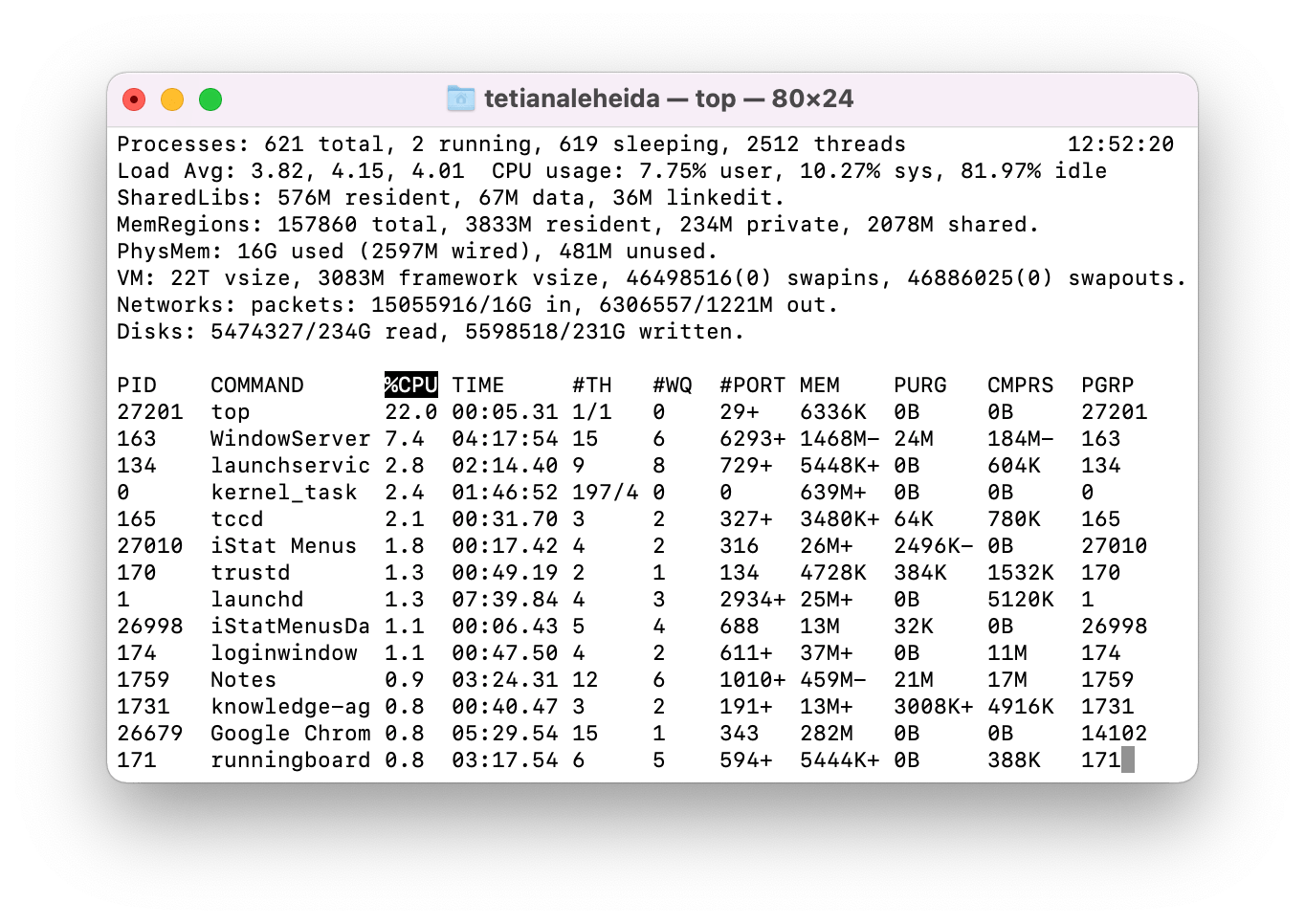How to view and kill processes on your Mac: Expert guide
You might need to kill a process if your Mac starts slowing down or behaving erratically. Whether it's a misbehaving app or a background process, identifying and stopping it can quickly solve the problem. No more talking — let’s get down to business with this guide on how to view and kill processes on your Mac
Before you dig into advanced problem-solving, check if one of these quick fixes will work for you:
| What's wrong | Solution | |
|---|---|---|
| Mac slowing down | Kill the process in Activity Monitor or Terminal. | |
| Hard to find the problem process | Use iStat Menus to track resource usage. | |
| App not responding | Force quit using QuitAll or Activity Monitor. | |
| Background processes consuming resources | Quit them using QuitAll. | |
| Mac slows down at startup | Remove unnecessary startup items in System Settings. | |
How to kill process using Activity Monitor
One of the easiest way to view all active processes running on your Mac is to launch Activity Monitor from your Applications folder. In the default CPU tab, you can see how much processing power every process takes, ranked by the most consuming. And if you switch to the Memory tab, you will see the same list ranked by the amount of used up RAM.
For more immediate information on how your computer resources are consumed, check running process in Mac using iStat Menus, which handily lives in your menu bar and, in its MEM table, shows you applications and processes that are consuming more than their fair share of RAM in real time.

iStat Menus also has a shortcut to opening Activity Monitor — just click the first icon on the left at the bottom of iStat’s drop-down menu. Here’s how to terminate process Mac is stuck upon:
Open Activity Monitor. The fastest way is to open Activity Monitor through iStat Menus. Alternatively, press Command + spacebar to call up Spotlight, then start typing Activity Monitor. When it appears in Spotlight, hit Return to launch it.
View and filter tasks. You'll notice there are five tabs across the top of the Activity Monitor window: CPU, Energy, Memory, Disk, and Network. Clicking on any of those tabs organizes processes according to the percentage of the resource they are using. So, clicking on CPU lists tasks in the order of how much CPU capacity they're using. By default, processes are ordered starting with the one that's consuming the most of the resource at the top, so you can quickly see where problems are occurring or likely to occur. To flip the order, so that processes consuming the least of the resource are at the top, click the arrow next to Memory or CPU above the list of processes.
Kill problematic processes. When you identify a process that's causing a problem, either because it's hogging lots of CPU cycles or memory, or because it's highlighted in the Activity Monitor as having crashed, you need to kill it. To do that, click on the process first and then on the X in the Activity Monitor toolbar. The process will quit and free up the resources it was taking up. If it's a critical process, it will restart. If it's an application, it will remain shut down.
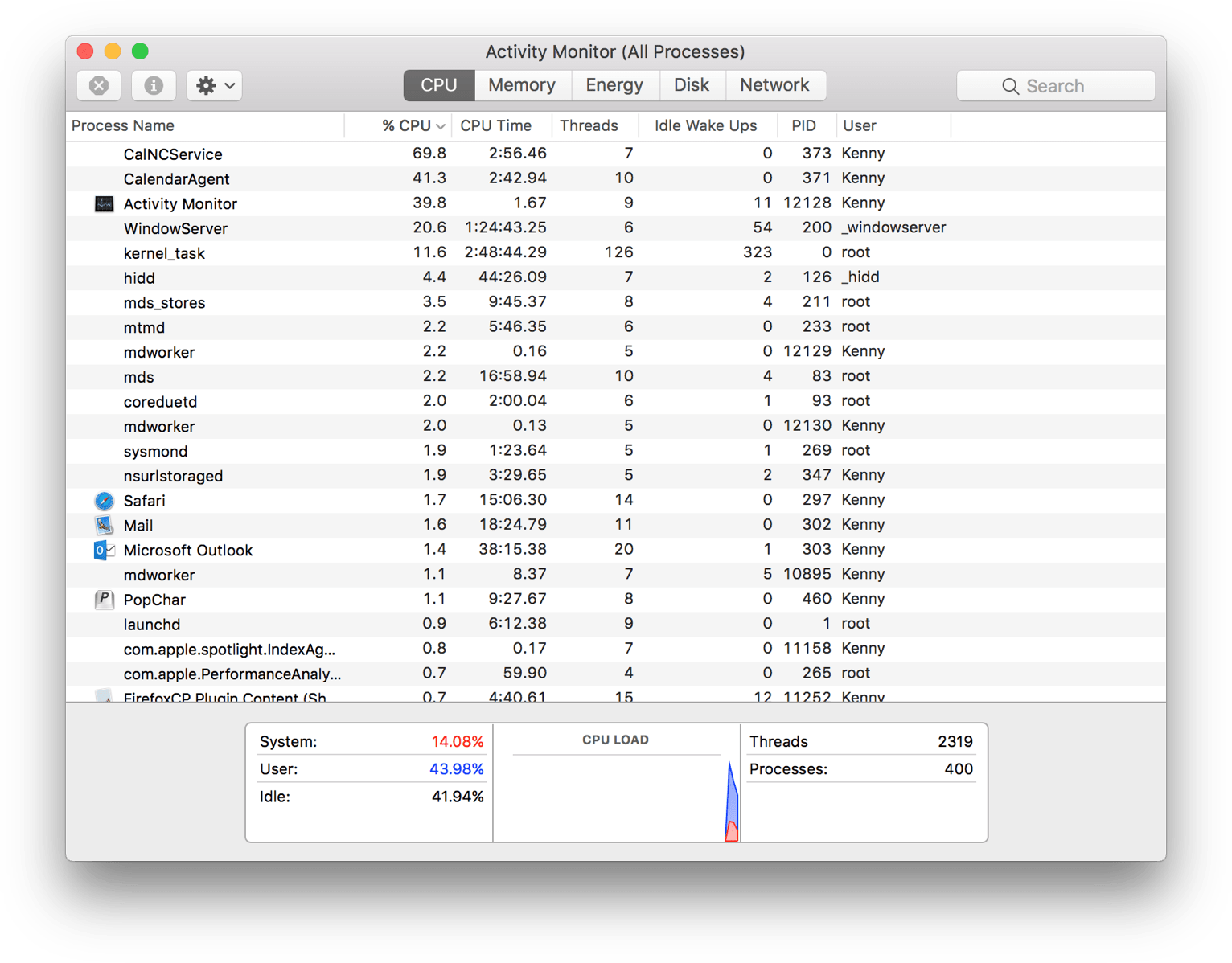
How to shut down processes using Terminal
If you prefer working with Terminal, you can also use it to quit processes:
- Launch Terminal. Press Command and spacebar to pull up Spotlight then start typing Terminal. When the Terminal app appears in Spotlight, tap Return to launch it. Alternatively, navigate to the Utilities folder in Applications and double-click Terminal.
- View processes. When Terminal has launched, type "top" into the Terminal window. You'll see a list of currently running processes. At the top of the list is an overview of the processes that are running and the resources they're consuming.
Kill an unwanted process. When you identify a process that's causing a problem or consuming too many resources, take note of the number in the PID column next to the name of the process. To kill the process, type "kill -9" followed by the PID number. Press Enter. The problem process will now quit.
How to force quit an application that’s not responding
The problem is, sometimes when you try to quit a process, your Mac goes all frozen or there’s an error message telling you some app is not responding, and so it’s impossible to quit. In this case, you have to force quit application Mac is hampered by.
Quit All is the most efficient tool to force quit processes safely — so you don’t lose the changes you’ve recently made in your files and apps. It also allows you to quit background processes, which is a super valuable feature, considering it’s not easy to catch all the apps that work in the background. Solve the force quit process Mac issue by opening the app from the menu bar > click Quit All or View background apps > Quit All. As easy as that.
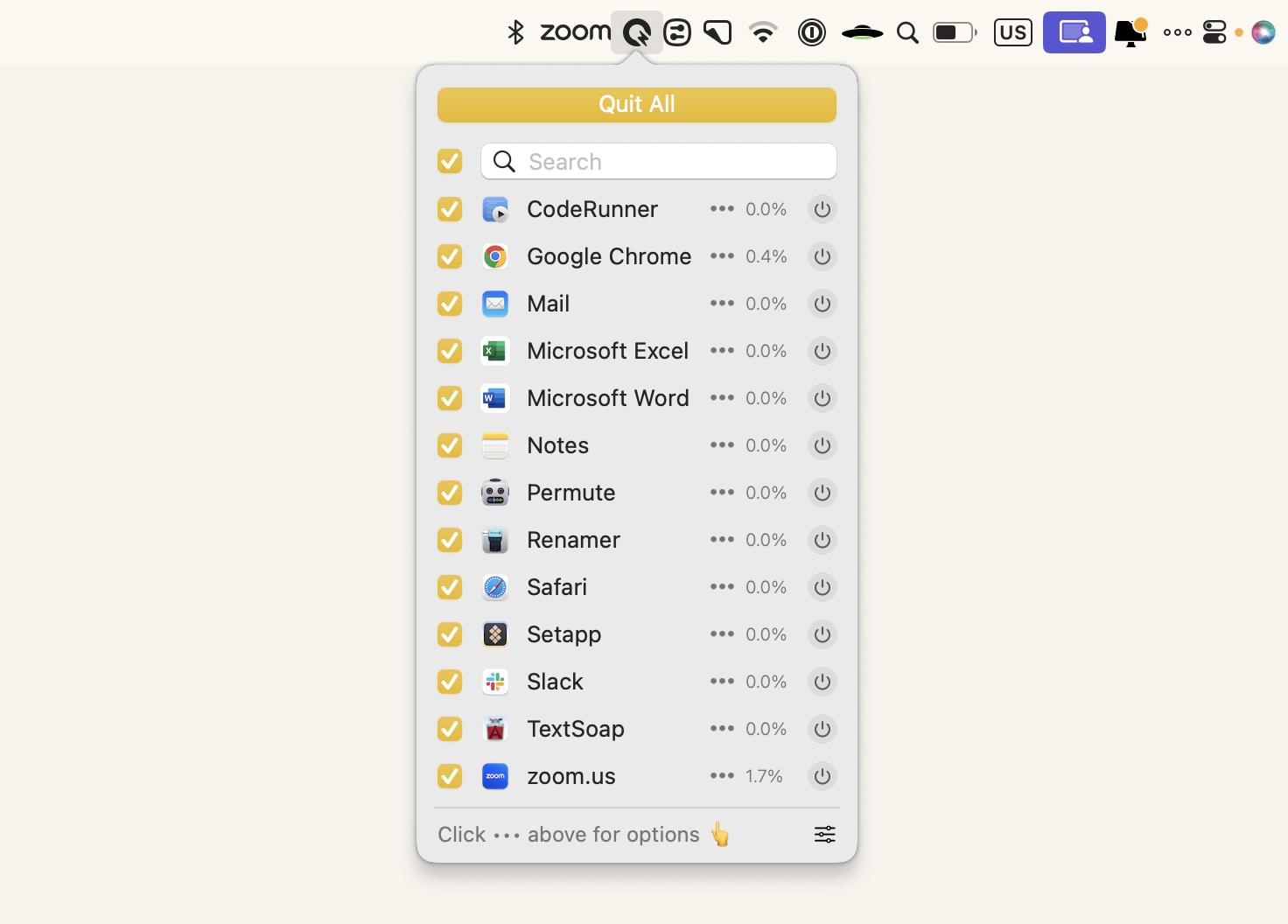
Force quit on Mac using Activity Monitor
If you know exactly which app you need to force quit, you can also use Activity Monitor for this task:
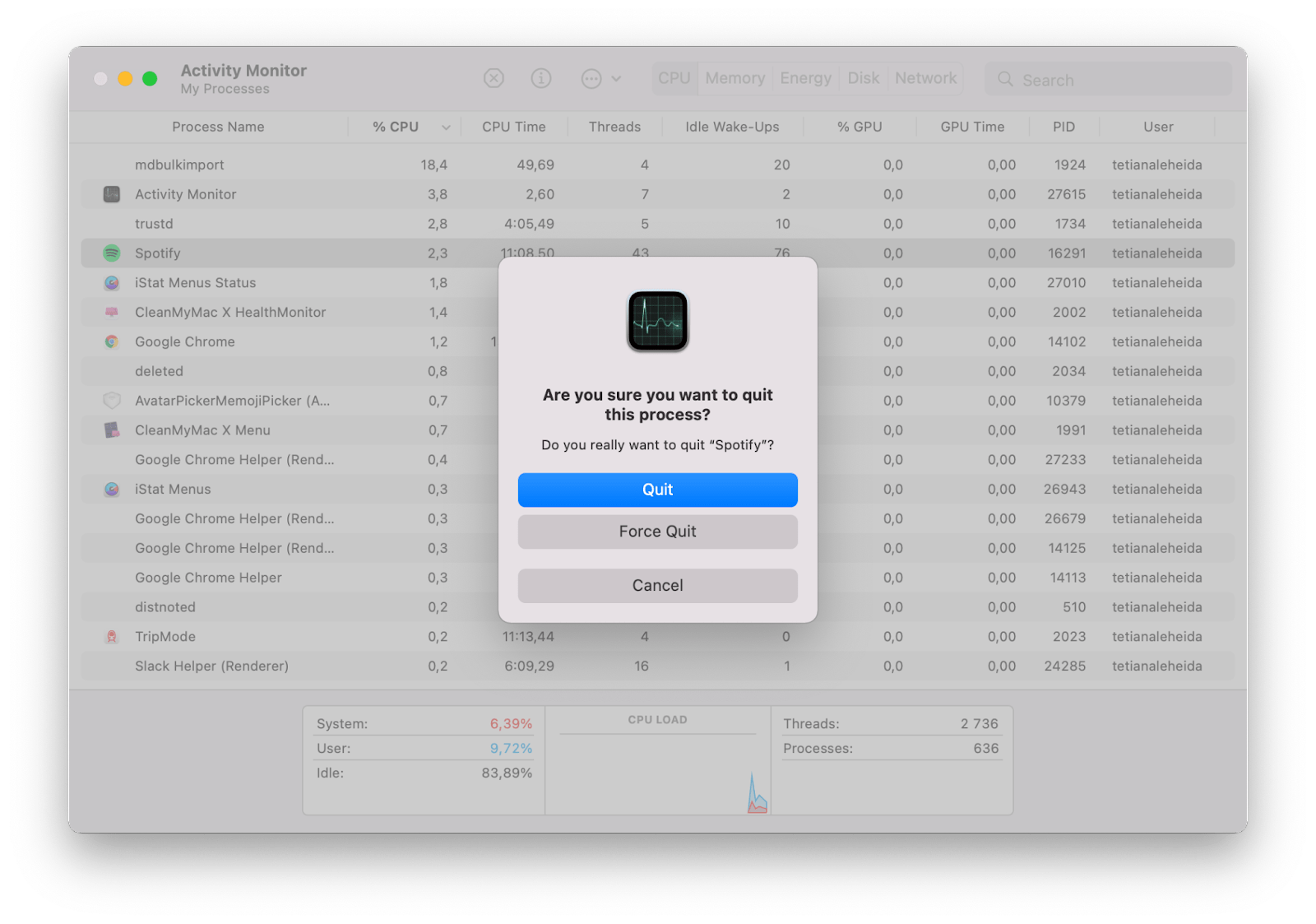
- Open Activity Monitor through Spotlight or iStat Menus.
- Click the app you want to force quit.
- Click the X button at the top.
- In the new window, choose Force Quit.
How to force quit on Mac with a keyboard shortcut
If you need to force quit the app that is currently open, you can use the keyboard shortcut. Just make sure you don’t accidentally quit some essential active application.
- Press and hold Command + Shift + Option.
- Press Esc.
- Confirm you want to force quit the app (although in some cases, it will force quit without confirmation).
Force quit from the Apple menu
Finally, you can terminate processes through Apple’s Force Quit menu:
- Click the Apple logo.
- Choose Force Quit.
- In the new window, highlight one or multiple active apps and click Force Quit.
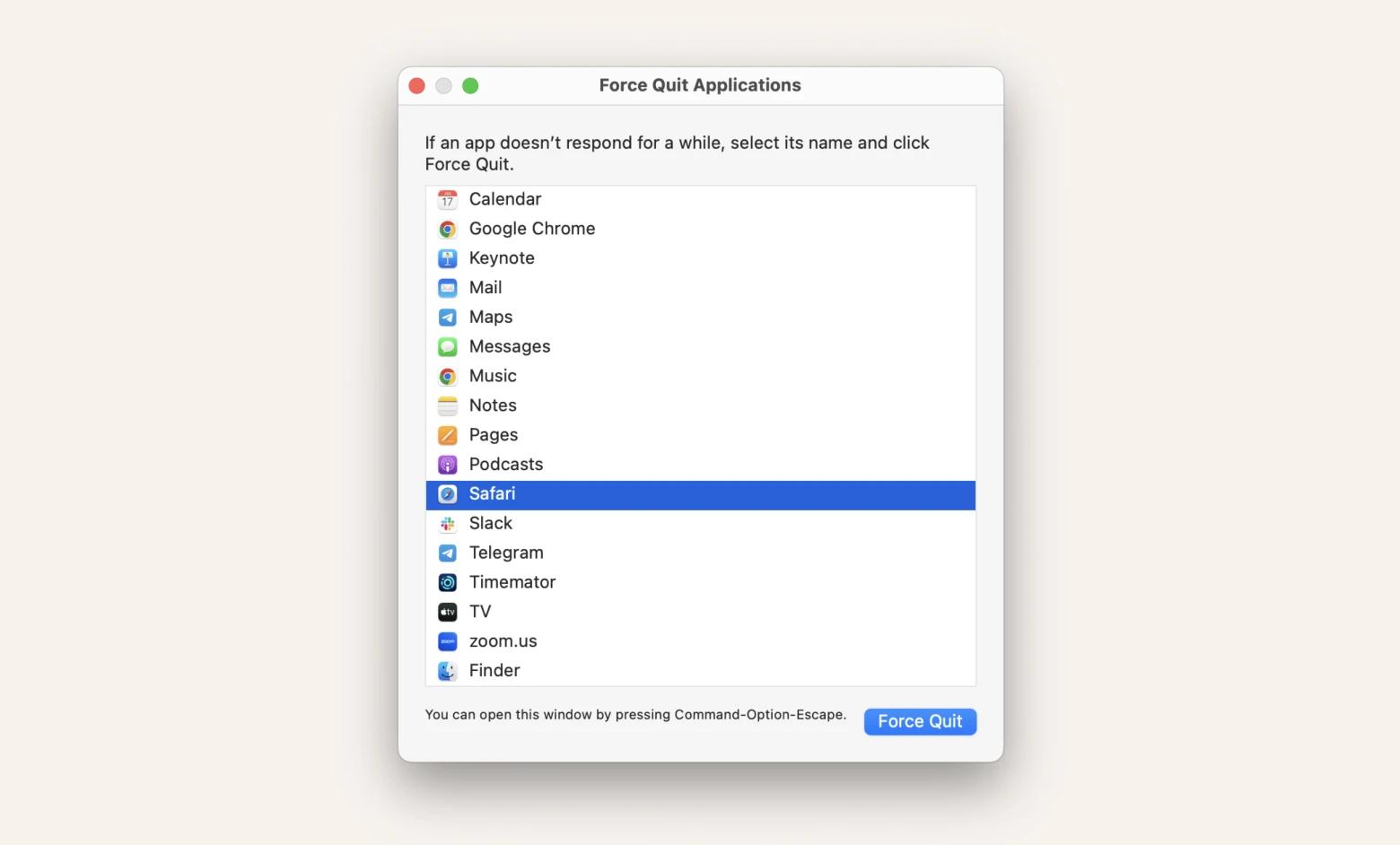
Reset a problematic app
There's one more thing you can try if an app keeps running slowly or crashing – reset it. Thanks to CleanMyMac, resetting an app is easy. Here's what you need to do:
- Install and open CleanMyMac.
- Click Applications > Scan.
- Click Manage My Applications and find a problematic app.
- Click the arrow near the app and select all files except for binaries.
- Click Remove.

All the selected files will be trashed, effectively resetting the app to its default state. When you launch it the next time, it will behave as if it has just been installed — so you'll need to recreate any custom settings or preferences.
If resetting the app doesn't work, the final resort should be to uninstall the app completely and reinstall it. To do that, select the app and uninstall it.
How to prevent problematic processes
You can pretty much avoid issues altogether by being a little bit proactive in hunting down the common culprits. With iStat Menus, you can quickly identify which applications or processes are consuming finite resources, such as CPU and RAM. And CleanMyMac will help you run regular maintenance tasks to keep your Mac running smoothly:
- Install and open CleanMyMac.
- Click Performance on the left panel > Run.
- If you see a window saying "X Maintenance Tasks Recommended", click Run. Or, click View All Tasks > Maintenance Tasks. There, select the tasks and click Run.
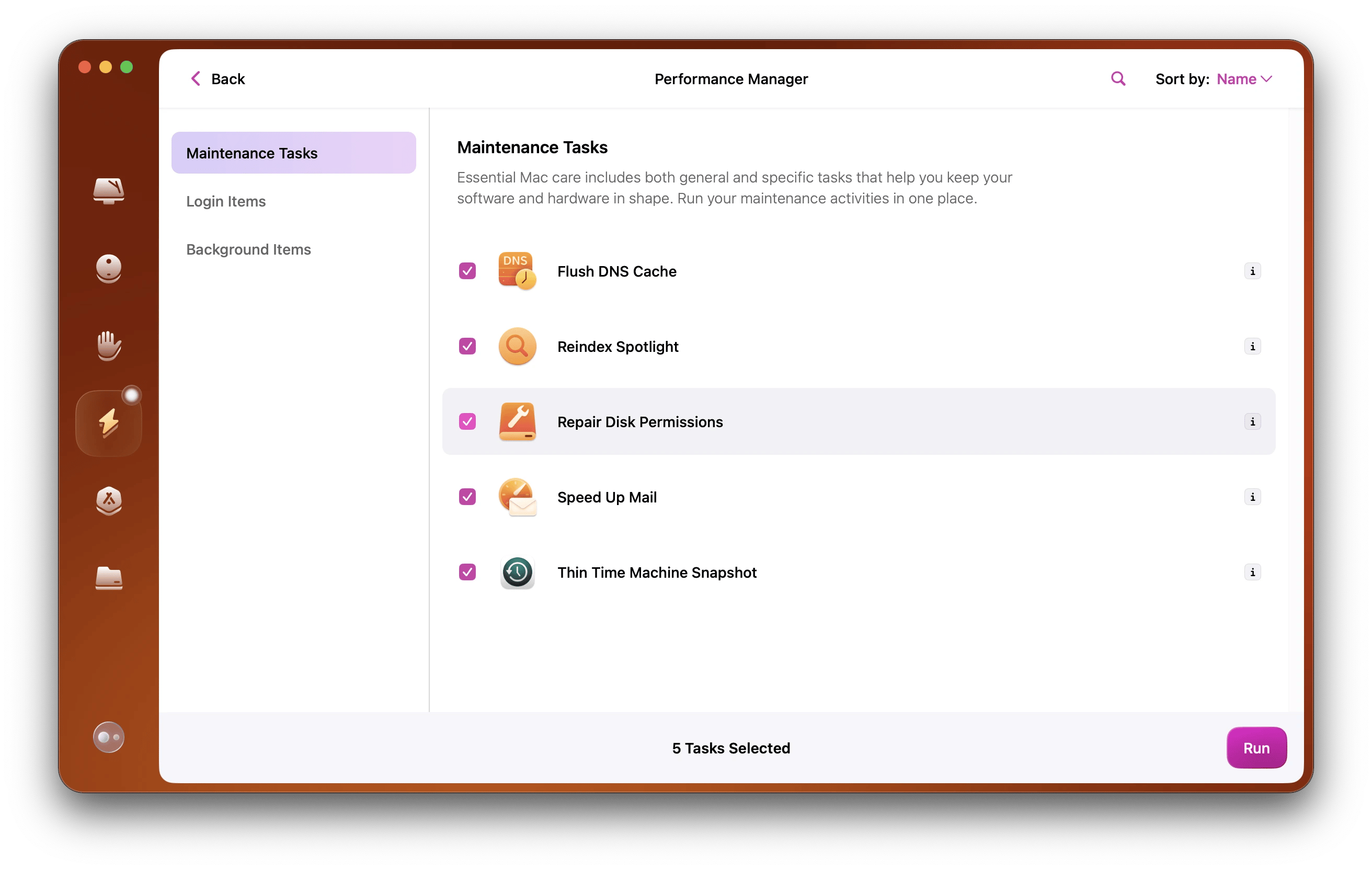
Run other tasks, as necessary. If you're having problems with Mail, repeat step 3, but this time click the checkbox next to Speed Up Mail. Likewise, if Spotlight is running slowly, run the Reindex Spotlight task.
How to kill a background process
To kill a background process, use Quit All: Open the app > View background apps > Quit All. It’s a surefire way to stop all the hidden processes from secretly running on Mac.

Another Mac force kill process solution is Activity Monitor. While the steps are the same as described in the "How to kill a running process using Activity Monitor" section above, the key difference is that background processes often have obscure names that don't clearly describe what they do.
Be careful when killing a background process with Activity Monitor and, if not sure, leave it alone or search online for its exact role in your system. Otherwise, you might risk causing problems for your macOS. Generally, background processes don't tend to consume significant RAM or CPU cycles, so if you spot one that does, it has probably got into trouble. Kill it using the X in the Activity Monitor toolbar.
Fix crashing apps with Spindump
While Force Quit will fix the problem, it’s a temporary solution. If you’re determined to identify the source of crashing apps and prevent them from happening, use Spindump on Mac. It’s a hang reporting tool that alerts you about the crash and helps share the details with the app developer.
Whenever the app crashes, it will trigger Spindump and send the information to Apple or the app developer. Not only does it help you understand what just happened, but it also helps the developer track the conditions of app misbehavior — and fix it accordingly. A win-win.
How to create a Spindump file on Mac
- Open Activity Monitor through Applications > Utilities.
- Pick the app for which you want to create a Spindump file, then click on the Settings icon.
- Select Spindump or Run Spindump.
- Wait a few seconds for the file to generate.
- Click Save.
How to easily remove startup items
One common cause of Macs running slowly or having problems is items that launch automatically at startup. These could be helper apps for something like iTunes or just complete apps in their own right. They are also frequently apps you once used but no longer need.
To review the apps and helpers that startup when you log in:
- Open System Settings from the Apple menu > General.
- Then click Login Items.
- Select the name of the item you want to stop launching at startup and click the minus button. The app will no longer start up automatically when you log in.
FAQ about how to kill processes on your Mac
How to kill process on port Mac
To kill the process running on that specific Mac port:
- Open Terminal.
- Run the command lsof -i :
(make sure to insert your port number) to find out what is running on this port - Copy the Process ID (PID) from the Terminal output
- Run the command kill -9
(make sure to insert your PID) to kill the process on port.
How to kill the language input process
There is no simple command to kill the language input process. However, restarting your Mac should help.
What is the force quit command on Mac?
The force quit command on Mac is Command + Option + Esc. Press it and you’ll see the Force Quit menu that lets you force quit one or multiple apps.
How to force quit Adobe on Mac when Command + Q won’t work
To force quit Adobe on Mac when Command + Q doesn't work, press and hold down Command + Option + Shift and then press Esc. However, some apps — including Adobe — may not be responding to these commands. In this case, try force quitting with Quit All, Activity Monitor, or Terminal. If those don’t work as well, you might need to reset Adobe’s Preferences.
As you can see there are lots of different ways and apps that help you view and kill processes in macOS. iStat Menus is a great way to monitor which processes are causing problems, so you can launch Activity Monitor and quit them. Quit All is a great solution to force quit processes and background apps. Finally, running maintenance scripts in CleanMyMac regularly prevents problems occurring in the first place. Last, but not least, I use Commander One when I need a dual-pane view fro quick file management.
Best of all, all these apps are available to try for free on Setapp, with the platform's 7-day free trial! Explore these and 260+ more apps for Mac and iOS to power up your daily workflow.
